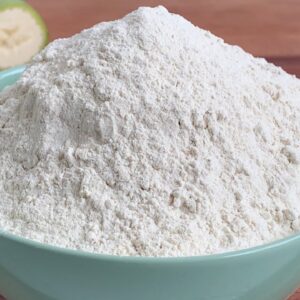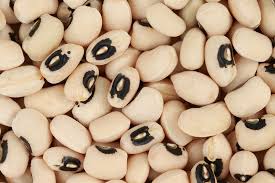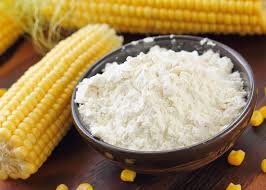Cocoyam Powder
₦3,000.00 – ₦12,000.00
Cocoyam powder is a gluten-free, nutrient-rich food made from cocoyam tubers like taro and tannia. Popular in African cuisine, it’s used to thicken soups, stews, and sauces, make fufu, porridge, and gluten-free baked goods.
Rich in fiber, vitamins, and complex carbs, it’s low-fat and perfect for healthy, versatile cooking. Store in a cool, dry place for lasting freshness.
Description
Cocoyam powder is a versatile and nutrient-rich food product derived from cocoyam tubers, which are roots of plants in the Araceae family, primarily from the Colocasia esculenta and Xanthosoma sagittifolium species. It is widely used in African cuisine, particularly in Nigeria and Ghana, for its thickening properties and nutritional benefits.
Botanical Description
- Scientific Names:
- Colocasia esculenta (Taro)
- Xanthosoma sagittifolium (Tannia)
- Family: Araceae
- Plant Description:
- Leaves: Large, heart-shaped, and green.
- Tubers: Underground corms or tubers, which are starchy and vary in size.
Physical Characteristics of Cocoyam Tubers
- Size: Can range from small to large, typically weighing 0.5 to 2 kilograms.
- Shape: Round, oval, or elongated.
- Color: Skin color varies from brown to purple, while the flesh is typically white, cream, or pink.
- Texture: Firm and starchy.
Processing of Cocoyam Tubers
- Harvesting: Cocoyam tubers are harvested once they mature, usually 6-12 months after planting.
- Cleaning: The tubers are cleaned thoroughly to remove soil and other impurities.
- Peeling: The skin is peeled off to reveal the flesh.
- Cutting: The tubers are cut into thin slices or small pieces to facilitate drying.
- Drying: The slices or pieces are sun-dried or dried in a dehydrator until all moisture is removed.
- Grinding: The dried pieces are ground into a fine powder using traditional methods or mechanical grinders.
- Sieving: The powder is sieved to ensure a consistent texture.
Physical Characteristics of Cocoyam Powder
- Color: Light beige to creamy white.
- Texture: Fine, smooth powder.
- Aroma: Mild, slightly nutty aroma.
- Flavor: Mild, earthy, and slightly nutty taste.
Nutritional Profile (per 100 grams)
- Calories: Approximately 350 kcal
- Carbohydrates: Around 80 grams
- Protein: About 2-4 grams
- Fat: Roughly 0.2 grams
- Fiber: Approximately 5-7 grams
- Vitamins and Minerals: Rich in vitamin C, vitamin B6, potassium, magnesium, iron, and dietary fiber.
Health Benefits
- Digestive Health: High in dietary fiber, which aids in digestion and promotes bowel regularity.
- Energy Source: Rich in complex carbohydrates, providing a steady source of energy.
- Nutrient-Rich: Contains essential vitamins and minerals that support overall health.
- Gluten-Free: Naturally gluten-free, suitable for individuals with gluten intolerance or celiac disease.
- Low Fat: Low in fat, making it a healthy addition to various diets.
Culinary Uses
- Thickening Agent: Commonly used to thicken soups, stews, and sauces, giving them a smooth and creamy texture.
- Fufu: Often used to make fufu, a traditional African dish where cocoyam powder is mixed with water and cooked to form a dough-like consistency.
- Baking: Can be used in gluten-free baking recipes as a substitute for wheat flour.
- Porridge: Used to prepare cocoyam porridge by mixing the powder with water or milk and cooking it until it thickens.
- Snacks: Incorporated into various traditional snacks and pastries.
Traditional Recipes
- Cocoyam Fufu:
- Ingredients: Cocoyam powder, water.
- Preparation: Mix cocoyam powder with water in a pot. Cook over medium heat, stirring continuously until it forms a smooth, dough-like consistency. Serve with soups or stews.
- Ofe Oha (Oha Soup):
- Ingredients: Cocoyam powder (or fresh cocoyam), oha leaves, assorted meats, stockfish, crayfish, palm oil, onions, and seasonings.
- Preparation: Cook meats and stockfish with onions and seasonings. Add palm oil and crayfish. Mix cocoyam powder with water to form a paste and add it to the soup to thicken. Finally, add oha leaves and simmer until cooked.
Preparation and Usage
- Mixing: Cocoyam powder is usually mixed with cold or warm water to form a paste before adding it to dishes.
- Cooking: It is added towards the end of the cooking process to allow it to dissolve and thicken the dish properly.
Storage
- Conditions: Store in an airtight container in a cool, dry place away from direct sunlight.
- Shelf Life: Can last for several months if stored properly, though it is best used within six months for optimal flavor and nutritional value.
Cultural and Historical Significance
- Culinary Tradition: Cocoyam has been a staple food in West African cuisine for centuries, particularly among the Igbo people of Nigeria.
- Traditional Medicine: Sometimes used in traditional medicine for its purported health benefits, including aiding digestion and providing energy.
- Economic Importance: Cultivation and processing of cocoyam provide a source of income for many farmers and traders in West Africa.
Safety and Precautions
- Allergies: Generally safe for most people, but individuals with specific food allergies should exercise caution.
- Quality Control: Ensure that cocoyam powder is sourced from reputable suppliers to avoid contamination with dust or other foreign materials.
Additional information
| Weight | N/A |
|---|---|
| Package Size | 500g, 1kg, 2kg |






Reviews
There are no reviews yet.